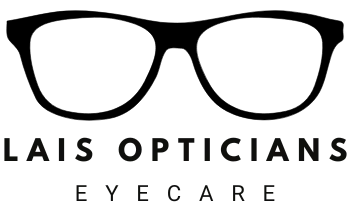Hyperopia, commonly known as long-sightedness, is a refractive error of the eye that affects millions of people worldwide.
Unlike Myopia (short-sightedness) where distant objects appear blurry, hyperopia causes difficulty in focusing on nearby objects.
In this blog, we will delve into the causes, symptoms and available treatments for hyperopia, and provide insight for those affected by this visual condition.
What is Hyperopia?
Hyperopia occurs when the eyeball is too short or the cornea has insufficient curvature, causing light rays to focus behind the retina instead of directly on it.
As a result, objects at a close distance appear blurry, while those seen at a distance may still be seen clearly. This condition is typically present from birth, but it can develop with age.

Symptoms
Identifying Hyperopia can be relatively straightforward if you experience the following symptoms:
- Blurred vision when looking at objects up-close
- Eye strain or discomfort after prolonged close-up tasks such as reading or computer work
- Frequent headaches, especially when engaging in near-focused activities
- Squinting to see things clearly at a distance or up-close

Causes
Several factors contribute to the development of hyperopia:
- Genetics: A family history of hyperopia can increase the likelihood of developing the condition.
- Eye Anatomy: If the eyeball is shorter than normal or the cornea is flatter, it can lead to long-sightedness.
- Age-related Hyperopia: As the lens in the eye loses its flexibility with age, it becomes harder to focus on close objects, also known as Presbyopia.
Diagnosis
An optometrist or ophthalmologist can diagnose hyperopia during a comprehensive eye examination. They may conduct a series of tests, including a visual acuity test and a retinoscopy to determine the extent of long-sightedness and prescribe appropriate corrective measures.
Treatment
Fortunately, there are several measures available to manage hyperopia effectively:
- Eyeglasses: Prescription glasses with convex lenses help focus light directly onto the retina, correcting long-sightedness and providing clear vision.
- Contact Lenses: Specially designed contact lenses, such as soft contact lenses or gas permeable lenses are a suitable alternative to glasses for some individuals.
- Refractive Surgery: Procedures like LASIK can reshape the cornea, correcting hyperopia. However, not all candidates are suitable for surgery, therefore consultation with a eye specialist is essential.

Preventative Measures
While Hyperopia cannot entirely be prevented, certain lifestyle habits can help maintain good eye health:
Regular Eye Check-ups: Routine eye examinations can detect refractive errors early and allow for timely intervention.
Eye-Friendly Workspace: Adjust your computer screen, books or other reading materials to an appropriate distance to minimise eye strain.
Take Breaks: Practice the 20-20-20 rule – every 20 minutes, look at something 20 feet away for 20 seconds – to give your eyes a break during prolonged close-up work.
Hyperopia may be a common problem, but it can impact daily life if left uncorrected.
Understanding its causes, recognising its symptoms and seeking timely treatment are essential steps in maintaining good eye health.
Regular eye check-ups and adopting good eye-friendly habits can go a long way in managing hyperopia and enjoying clear vision for years to come.
If you suspect that yourself or a loved one has hyperopia, make sure to make a booking with an eye care professional for a comprehensive examination and personalised guidance.
...
Please contact your local Eye Care Professional for further advice or call Lais Opticians directly on 020 8478 1631
